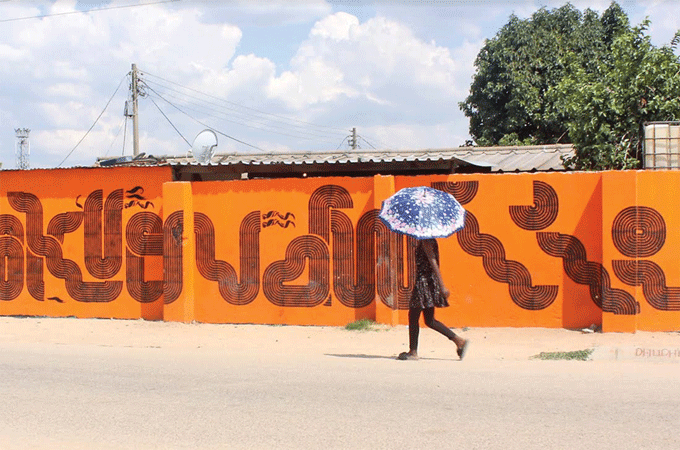
BY NYADZOMBE NYAMPENZA
THE writing is on the wall for Chitungwiza residents living on the border of Seke Unit P and Unit N.
Those going up the street to Saint Monica Roman Catholic Church or down to Try Again Shops cannot fail to notice the bold coloured mural with lines weaving into each other in a familiar pattern.
It is the work of United States- based Zimbabwean graphic designer, interdisciplinary artist, and educator, Nontsikelelo Mutiti.
The site for the mural is the Animal Farm Artist Residency founded by visual artist Admire Kamudzengerere and it was installed with the collaboration of local collective CaliGraph.
The place has become a frequent selfie spot for young people on the promenade.
The installation brings awareness to hair braiding as an important cultural heritage.
Mutiti’s projects raise awareness about black hair among African women and appreciation of the economic value of the work done by the hairdressers.
- Chamisa under fire over US$120K donation
- Mavhunga puts DeMbare into Chibuku quarterfinals
- Pension funds bet on Cabora Bassa oilfields
- Councils defy govt fire tender directive
Keep Reading
Women will easily recognise the patterns from spending hours braiding each other’s hair and wearing the design in their own hair.
Men also have the design imprinted in their minds from unconsciously observing it on the side of a sister’s head, top of a daughter’s head, or the back of a spouse’s head.
The ubiquitous braiding pattern can be noticed in the streets from an errant loose strand of synthetic braid on the tarmac, and mounds of braids discarded at the dumb after a previous owner shed their hairstyle.
Although the designs are common, few appreciate their value as an important cultural heritage.
In the mural, Mutiti has translated the pattern of hair braiding into typography. The orange background was inspired by the interiors of salons and barbershops.
Mutiti’s work deals with the theme of hair by focusing on shape and form inspired by an early experience when she arrived in the United States of America to pursue her studies.
She had not carried a comb in her luggage hoping to purchase one, she could not find any that was suited to her “hard maShona hair’’ as she calls it.
She ended up spending 461 days without combing her hair. The experience led her to pursue continuing projects on the topic of hair.
She looks at the intergenerational knowledge and techniques of hair braiding as “meaning making”, and “a way of communicating”.
She also hopes to bring awareness to hair technicians on the long-term effects of prolonged strenuous and repetitive tasks.
Some of Mutiti’s recent projects have been titled Ruka and Kududunura. The former means to weave and the later can be translated as to unravel.
The terms for braiding have also been adopted into the urban lexicon to express how stories are told. Tall-tales are called Kuruka, and Kududunura is the tell-all.
Mutiti’s former titles are applicable in the local context as her work engages with the community by revealing the importance of traditional design and pattern making whose aesthetics are under-appreciated due to after effects of colonialism.
- Follow us on Twitter @NewsDayZimbabwe











